Day 4
Bright and early...
The view from our breakfast rooftop restaurant.
The highlight of the trip.
Bagan !!!!!
This is the view from our breakfast terrace.
What a welcome to this town .
Everywhere you look.
We arrived in the dark last night.
So this is our first view of this place today.
Amazing huh .
Everywhere you look .
All this as we have breakfast .
Seeing this we decided to get some balloon tickets for tomorrow. Yay .
As the sun came out...
The views got better .
We left the hotel soon after. Just outside.....
Temples .
We are basically driving through a forest of temples .
Old skool .
Bagan formerly Pagan) is an ancient city located in the Mandalay Region of Myanmar. From the 9th to 13th centuries, the city was the capital of the Pagan Kingdom, the first kingdom that unified the regions that would later constitute modern Myanmar.
During the kingdom's height between the 11th and 13th centuries, over 10,000 Buddhist temples, pagodas and monasteries were constructed in the Bagan plains alone, of which the remains of over 2,200 temples and pagodas still survive to the present day.
2200 of these still survive .
This is one of the bigger temples .
Memories :-)
According to the Burmese chronicles, Bagan was founded in the second century AD, and fortified in 849 AD by King Pyinbya, 34th successor of the founder of early Bagan.[4] Mainstream scholarship however holds that Bagan was founded in the mid-to-late 9th century by the Mranma (Burmans), who had recently entered the Irrawaddy valley from the Nanzhao Kingdom. It was among several competing Pyu city-states until the late 10th century when the Burman settlement grew in authority and grandeur.
From 1044 to 1287, Bagan was the capital as well as the political, economic and cultural nerve center of the Pagan Empire. Over the course of 250 years, Bagan's rulers and their wealthy subjects constructed over 10,000 religious monuments (approximately 1000 stupas, 10,000 small temples and 3000 monasteries)[6] in an area of 104 square kilometres (40 sq mi) in the Bagan plains.
Ancient paintings .
Very cool inside compared to the outside .
Narrow stairs up .
When you reach the upper level...
Then you get a nice view of the surrounding plains .
Like so.....
Amazing huh .
The prosperous city grew in size and grandeur, and became a cosmopolitan center for religious and secular studies, specializing in Pali scholarship in grammar and philosophical-psychological (abhidhamma) studies as well as works in a variety of languages on prosody, phonology, grammar, astrology, alchemy, medicine, and legal studies.[7] The city attracted monks and students from as far as India, Sri Lanka and the Khmer Empire.
You just can't get tired of this view .
The culture of Bagan was dominated by religion. The religion of Bagan was fluid, syncretic and by later standards, unorthodox. It was largely a continuation of religious trends in the Pyu era where Theravada Buddhism co-existed with Mahayana Buddhism, Tantric Buddhism, various Hindu (Saivite, and Vaishana) schools as well as native animist (nat) traditions. While the royal patronage of Theravada Buddhism since the mid-11th century had enabled the Buddhist school to gradually gain primacy, other traditions continued to thrive throughout the Pagan period to degrees later unseen.
With the mountain range in the background .
The Dhammayazika Pagoda is a Buddhist temple located in the village of Pwasaw (located east of Bagan) in Burma. It was built in 1196 during the reign of King Narapatisithu. The pagoda is circular in design, and is made of brick. Its three terraces contain terra cotta tiles illustrating scenes from the Jataka.
Left most .
Dhammayangyi Temple was built by the tyrant King Narathu during his three year reign. From a distance, or ballooning above, the temple looks like an Egyptian pyramid and it’s the most massive in size structure in Bagan. Locals refer to it to the haunted temple and think it is haunted with the sins of the ruthless King Narathu who killed his own father, brother, and queen. Others think there are hidden treasures behind the blocked up walls. The temple is also home to the rare double Buddha statues.
All this from one vantage point .
Its still early in the morning .
Both bunnies like ;-)
Oh wait...
How to stop :-P
Finally we leave....
And continue the tour .
Nice roads ;-P
An old home .
Water catchments... just like at Angkor .
From 1044 to 1287, Bagan was the capital as well as the political, economic and cultural nerve center of the Pagan Empire. Over the course of 250 years, Bagan's rulers and their wealthy subjects constructed over 10,000 religious monuments (approximately 1000 stupas, 10,000 small temples and 3000 monasteries)[6] in an area of 104 square kilometres (40 sq mi) in the Bagan plains.
Send her far...then run away :-P
The Pagan Empire collapsed in 1287 due to repeated Mongol invasions (1277–1301). Recent research shows that Mongol armies may not have reached Bagan itself, and that even if they did, the damage they inflicted was probably minimal.[8] However, the damage had already been done. The city, once home to some 50,000 to 200,000 people, had been reduced to a small town, never to regain its preeminence. The city formally ceased to be the capital of Burma in December 1297 when the Myinsaing Kingdom became the new power in Upper Burma
Poverty.
Bagan survived into the 15th century as a human settlement, and as a pilgrimage destination throughout the imperial period. A smaller number of "new and impressive" religious monuments still went up to the mid-15th century but afterward, new temple constructions slowed to a trickle with fewer than 200 temples built between the 15th and 20th centuries
The old capital remained a pilgrimage destination but pilgrimage was focused only on "a score or so" most prominent temples out of the thousands such as the Ananda, the Shwezigon, the Sulamani, the Htilominlo, the Dhammayazika, and a few other temples along an ancient road. The rest—thousands of less famous, out-of-the-way temples—fell into disrepair, and most did not survive the test of time
Look carefully at the gondola..ha ha ha.
A stop to buy our tickets for tomorrow.
Damn expensive. But YOLO .
The modern town .
A local produce market .
Lots of tourist here .
Wood to make Thanaka. Cold paste .
Old skool market.
See the cold paste on their cheeks .
Enjoying a nice Cuban.
Betel leaf juice.
Local lasses .
Back on the car .
We continue our tour .
Here .
More temple guardians .
Ancient kings .
Surrounding temples .
A reclining Buddha .
The Shwezigon Pagoda or Shwezigon Paya is a Buddhist temple located in Nyaung-U, a town near Bagan, in Myanmar. A prototype of Burmese stupas, it consists of a circular gold leaf-gilded stupa surrounded by smaller temples and shrines
Pure gold!!!
Side shrines .
The main pagoda .
Its all plated . ,but covered now for renovations .
Construction of the Shwezigon Pagoda began during the reign of King Anawrahta (r. 1044–77), who was the founder of the Pagan Dynasty, in 1059–1060 and was completed in 1102 AD, during the reign of his son King Kyansittha. Over the centuries the pagoda had been damaged by many earthquakes and other natural calamities, and has been refurbished several times. In recent renovations it has been covered by more than 30,000 copper plates. However, the lowest level terraces have remained as they were.
Gold paint .
Similar to the one in Rangoon .
Many statues everywhere .
This outfit is interesting .
The Pa'O people are the second largest ethnic group in the state of Shan. They also reside in Kayin State, Kayah State, Mon State, and the Bago Division. They are believed to be of Tibeto-Burman lineage, and share the language and culture of the Karen people. They compose two distinct groups: The Lowland Pa'O, based in Thaton, and The Highland Pa'O, based in Taunggyi. It is believed that there are as many as twenty-four Pa'O subgroups.[2]
Many of the modern day Pa'O have fled to Mae Hong Son Province, in northern Thailand, due to ongoing military conflicts in Myanmar.
A very big stupa.
With a tiny entrance .
Colourful .
More tribes people .
Very cute kids :-)
Next we came here .
Kyanzittha U Min of the three Kyanzittha U Mins located around Shwezigon Pagoda. the one mentioned here is on the west side. U Min means tunnel. It is constructed partly above ground and partly underground. Facing north. it used to have a Dhamma Sala (preaching hall) at its entrance.
On the south. there are traces of the site of another Dhamma Sala. The base built of stone still remains there. On the north there are an enclosure wall and an entrance. The walls of the U Min are adorned with ancient frescoes. The frescoes present pictures of Spires. Mount Meru. a Mongol warrior and Commander. and depict a pageant with musical instruments proceeding to the Pagoda.
There is on the ceiling of the northern entrance a picture of the monk Shin Upagutta taking meal. In the middle of the U Min is a cellar around which circuits a corridor. There are small meditation cellars. Unlike other caves in Bagan which were caved into the sand stone hill. this U Min is built of brick.
A last look...
Then to here .
Lots of peddlers .
Surroundings .
The Gubyaukgyi (alt. Kubyauk-gyi) temple, located just south of Bagan, Myanmar, in Myinkaba Village, is a Buddhist temple built in 1113 AD by Prince Yazakumar, shortly after the death of his father, King Kyansittha of the Pagan Dynasty.[1] The temple is notable for two reasons. First, it contains a large array of well-preserved frescoes on its interior walls, the oldest original paintings to be found in Bagan.[1] All of the frescoes are accompanied by ink captions written in Old Mon, providing one of the earliest examples of the language's use in Myanmar
Ollies .
Second, the temple is located just to the west of the Myazedi pagoda, at which was found two stone pillars with inscriptions written in four, ancient Southeast Asian languages: Pali, Old Mon, Old Burmese, and Pyu. The inscription on the pillar displayed by the Myazedi pagoda has been called the Burmese Rosetta Stone,[2] given its significance both historically and linguistically, as a key to cracking the Pyu language
Central shrine .
The style of the temple includes both Mon[2] and Indian[1] elements. In the case of the latter, the temple's towers are built in the Indian Shikhara style
In the interior above these windows are terraces with small Buddha figures, backed by intricate, ornamental stucco carvings with floral designs. Other stucco designs that can be seen in Gubyaukgyi include concentric rings and ogre figurines. There are also, in the walls, 34 recesses, each of which used to contain a statue of Buddha. Due to vandalism, however, only 19 of these statues remain
A popular retelling of the temple's construction goes as follows. Several decades before the construction of Gubyaukgyi, the wife of King Kyansittha, Queen Thanbula, became pregnant. At the time, the king had no son, and as such no direct heir to the throne. When the king learned of the queen's pregnancy, he asked her to leave the royal court. Upon leaving the court, he gave her a valuable ring. He told the queen that, if the baby were a boy, she would be welcomed back to the court, and would return the ring. If the baby were a girl, she was told she could sell the ring and should not return to the court
The baby was a boy, Prince Yazakumar. However, by the time the queen returned to the king with their son, he had already promised his daughter's son, Alaungsithu, that he would be the heir to the kingdom. To compensate Yazakumar for his losing the chance to inherit the throne, the king gave him a large amount of land. Yazakumar sold much of this land, and with the proceeds built Gubyaukgyi, out of appreciation for his father.[2] To build the temple, Yazakumar employed three villages of slaves
The Gubyaukgyi temple has 547 well-preserved paintings depicting various Jātakas, or stories of Buddha's previous lives. Each of these paintings has an ink caption written in Old Mon; in fact, Gubyaukgyi's murals with their accompanying captions are the most complete collection of Jātakas in Old Mon in the world.[7] Each panel in the mural measures 1' 5" by 1' 5".[5] The Jātaka panels begin on the third row of paintings on the eastern, outer wall of the vestibule, to one's immediate left as one enters the temple's entrance (the left as one enters). They then wrap around (south to west to north to east) seven times, ending on the ninth row of paintings on the outer wall. Unlike Jātaka paintings seen in other Bagan temples, such as the Ananda Temple, Gubyaukgyi's are unnumbered; the paintings' good condition and detailed captions have made identification simple
Another shrine .
We walk outside .
To get a better view .
Go in and climb up .
More memories .
Way of life for thousands of years .
What a view .
Lots of shops on the temple grounds .
Exquisite carvings .
Now this is interesting.
The Kayan are a sub-group of Red Karen (Karenni people), Tibeto-Burman ethnic minority of Myanmar (Burma). The Kayan consists of the following groups: Kayan Lahwi (also called Padaung.
Met them during my first ride to Burma .
Women of the Kayan tribes identify themselves by their forms of dress. Women of the Kayan Lahwi tribe are well known for wearing neck rings, brass coils that are placed around the neck, appearing to lengthen it. The women wearing these coils are known as "giraffe women" to tourists.
Girls first start to wear rings when they are around 5 years old.[7] Over the years, the coil is replaced by a longer one and more turns are added. The weight of the brass pushes the collar bone down and compresses the rib cage. The neck itself is not lengthened; the appearance of a stretched neck is created by the deformation of the clavicle.
Back on the road.
A tyre repair shack here .
More temples .
ha ha ha ha
Lifetime memories .
Next we come here .
One of the major temples .
At the gate .
The Ananda Temple , located in Bagan, Myanmar is a Buddhisttemple built in 1105 AD during the reign (1084–1113) of King Kyanzittha of the Pagan Dynasty. It is one of four surviving temples in Bagan. The temple layout is in a cruciform with several terraces leading to a small pagoda at the top covered by an umbrella known as hti, which is the name of the umbrella or top ornament found in almost all pagodas in Myanmar. The Buddhist temple houses four standing Buddhas, each one facing the cardinal direction of East, North, West and South. The temple is said to be an architectural wonder in a fusion of Mon and adopted Indian style of architecture. The impressive temple has also been titled the "Westminster Abbey of Burma". The temple has close similarity to the Pathothamya temple of the 10th–11th century, and is also known as “veritable museum of stones”
The temple was damaged in the earthquake of 1975. However, it has been fully restored and is well maintained by frequent painting and whitewashing of the walls. On the occasion of 900th anniversary of its construction celebrated in 1990 the temple spires were gilded. It is a highly revered temple of Bagan
The legend associated with building of this temple ended in tragedy for the builders. Eight (8) monks who approached the King Kyanzittha seeking alms gave a graphic description of the Nandamula Cave temple in the Himalayas where they had meditated. When the king invited them to the palace to hear more details, the monks invoked their meditative psychic skills and vividly explained to the King, the landscape of the place they had lived. The King, pleased with this show of their skills, requested the monks to build a temple in the middle of the Bagan plains creating cool conditions in the temple. After the monks completed the temple construction, the King, in order to retain the uniqueness of the temple, got the architects (monks) killed to ensure that another similar structure was not built by them anywhere else
Huge complex.
The main entrance .
Ancient paintings .
One of the 4 main statues .
Frescoes of Buddha from birth to death depicted in the passage
A huge door .
More statues .
The main statue is huge .
Almost 1000 years old .
On the other side .
It would be beautiful in its heyday .
Time for lunch .
Food here is not bad .
After lunch we continue .
This temple is a bit different .
Its a Hindu temple .
Nanpaya Temple is a Hindu temple located in Myinkaba (a village south of Bagan) in Burma. The temple is adjacent to the Manuha Temple and was built by captive Thaton Kingdom King Makuta.[1]:150 It was built using mud mortar, stone, and brick, and was used as the residence of Manuha. The temple contains intricate carvings of Brahma, and also contains depictions of other Hindu gods. Also, because Manuha was a Mon, there are many figures and symbols of the Mon within the temple, including hinthas.
Many Hindu carvings .
All over the interior .
More temples follow .
This one is interesting .
The outside .
Manuha Temple is a Buddhist temple built in Myinkaba (located near Bagan), by captive Mon King Manuhain 1067, according to King Manuha's inscriptions. It is a rectangular building of two storeys. The building contains three images of seated Buddhas and an image of Buddha entering Nirvana. Manuha Temple is one of the oldest temples in Bagan.
The statue is really huge.
They must have built the temple around it or built the statue is parts .
There are 4 huge statues .
Look at the guy for scale .
Next .
The Gubyaukgyi (alt. Kubyauk-gyi) temple, located just south of Bagan, Myanmar, in Myinkaba Village, is a Buddhist temple built in 1113 AD by Prince Yazakumar, shortly after the death of his father, King Kyansittha of the Pagan Dynasty.[1] The temple is notable for two reasons. First, it contains a large array of well-preserved frescoes on its interior walls, the oldest original paintings to be found in Bagan
We were too tired so pass.
A few shots of the surrounding views...
Then back to glorious AC
Nice roads huh .
Its almost the end of a long day .
So we head to one of the tall temples .
This one is less crowded .
To enjoy the views of the sunset over Bagan.
A nearby large temple .
And the surrounding views .
Every where you look .
Amazing .
Nice huh .
As some people are serious in getting the full experience .
Some just want to play .
Look at that .
This is Bagan
This is Adventure .
This is Burma .
What a day .
Day 5
We are up very early the next morning .
Still dark .
For this .
Balloons .
A first for us both .
Takes a bit of time to inflate .
Check out the bus used to ferry guest .
First the fan .
No one wants that job .
The sun is not up yet .
Then the fire .
That's really hot .
Slowly it rises .
Time to board .
This British idiot was our pilot. A real jackass.
More flames .
And we are off .
All take off from the same place .
Look at that .
We rise slowly .
So do the rest .
We are in front .
And get a 360 view .
The rest of the balloons are still bunched up.
There is a nice easy breeze in the morning.
Being high has its advantages.
The views!!
Nice huh.
The sights of Bagan.
All this before the proper sunrise.
Look at that.
Everywhere you look.
Houses right next to the temples.
:-) :-)
A very interesting perspective.
Nice huh.
Everyone should come here at least once.
And take in the sights
And what a sight.
Why do we work....
So that we can have all...
..all these experiences in life.
The only thing you can take with you is your memories.
Don't wait till you retire to travel.
Do this when you are young.
Or as in our case middle aged :-P
Something you don't see often.
These are richer kids, the poor ones walk.
What a view.
Oxen carts.
Used here for hundreds of years.
The morning mist makes the view surreal.
Their views are spoilt by too many balloons close by.
3rd world at its finest.
Back to the views.
And some bigger temples.
The plains with the mountains in the distance.
More temples on the peaks.
In a few years time this place will be really commercialized
As the country is just opening up.
Not too long ago ,it was like what North Korea is today.
With the sunrise...
Everything glows...
The ride is expensive...
But worth it.
A last few pictures of this amazing place before we land.
Champagne on landing
Adventurer .
Back to our hotel in time for breakfast.
With a view.
After checking out we proceed on our tour of the country.
Burmese roads.
Must ride my bike here.
Old school roads repairs.
Crossing a dry river bed as there isn't a bridge.
What happens during the rains ??
Donkey :-)
Entering a small town called Salay.
We stop here for a while.
The monastery.
Some old British houses on the monastery grounds.
Colonial architecture.
The monastery proper.
Intricate carvings.
Everywhere.
Thick wooden poles.
We go behind for the better light angle.
Nice huh.
Even the stairs are ornate.
Reminds me of Bali.
Its hot in the sun ,but absolutely no humidity.
Memories :-)
There is a small museum on the grounds.
Indian cultural influence is seen everywhere.
We bought one of this as a souvenir.
Inside the monastery.
Salay Yoke SoneKyaung was built in AD 1882. It abounds in numerous beautiful artistic works and woodcarvings.It also hosts an ancient Buddha image, utensils of Yadanabon 19 century period and the museum of the Myanmar famous writer U Pone Nya.
Yoke-Sone-Kyaung'' which is a cultural heritage site in Salay, which in situated on the eastern bank of the Ayeyarwaddy River. It is famous with its spectacular woodcarvings and also
Such a rich history .
Dowry chest.
All this history...
In a tiny town.
A last look...
We continue our journey.
See the mountain?
Good roads.
See the peak with the temple.
We're going up there.
But first here.
Taung Kalat.
Still a long way to go.
Finally we reach the base of the temple.
Only to be told there are 777 steps to the top.
Erm.... no thanks.
We check out a temple at the base.
Dedicated to ancestor worship.
:-) :-)
A place to rest for some pilgrims.
We continue up the mountain.
Volcano actually .
Till we reach here.
A hotel with a view.
And what a view.
Will be really nice at night.
Nice huh.
A view of the temple.
Memories.
The summit behind.
Time for lunch.
What a day.
Day 6
After an short flight we're back in Yangon.
For our last day we go to the central old shopping district.
Old shops with modern stuff.
After that its to the central park.
Tiny offices.
Gilded stupa.
Many colonial buildings.
The park dates to 1867 to 1868, founded as Fytche Square in honour of the then Chief Commissioner of British Burma, Albert Fytche.
Lots of people relaxing.
A last look.
Cold cream everywhere.
An old 50s style office.
My hotel is right across a hospital.
Like Malaysia in the 70s.
Burma has been a wonderful experience.
Everyone should go there before it becomes too mainstream.
Cheers.


































































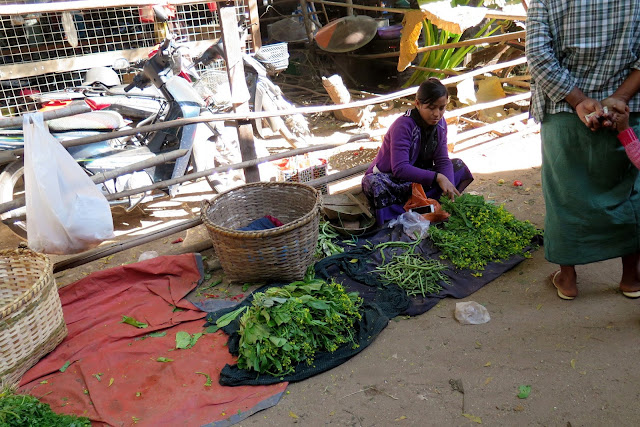








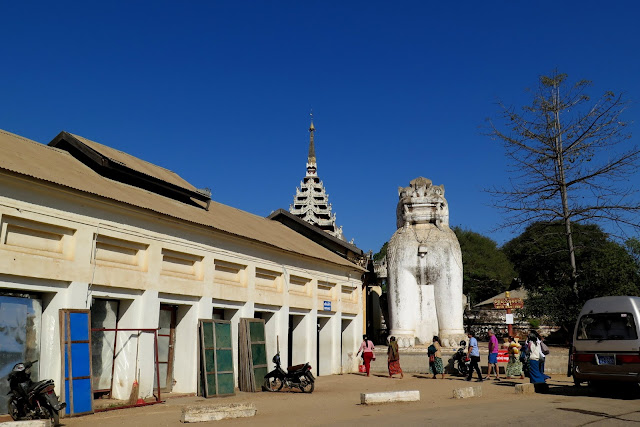
































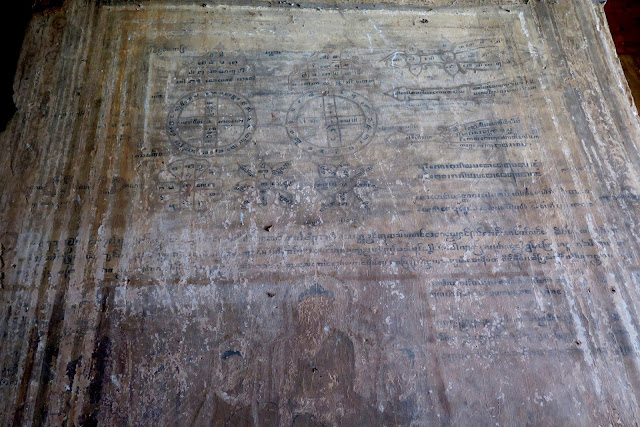























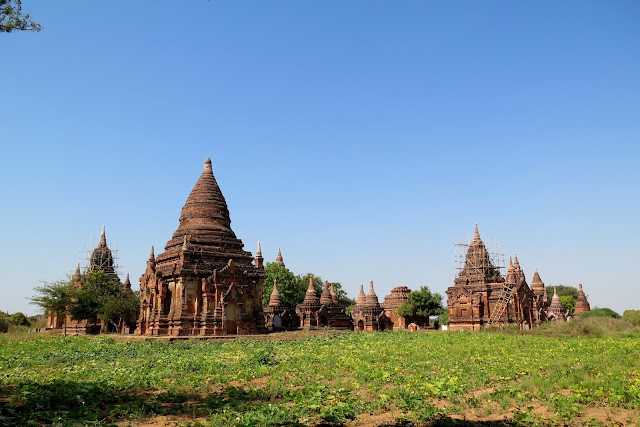
























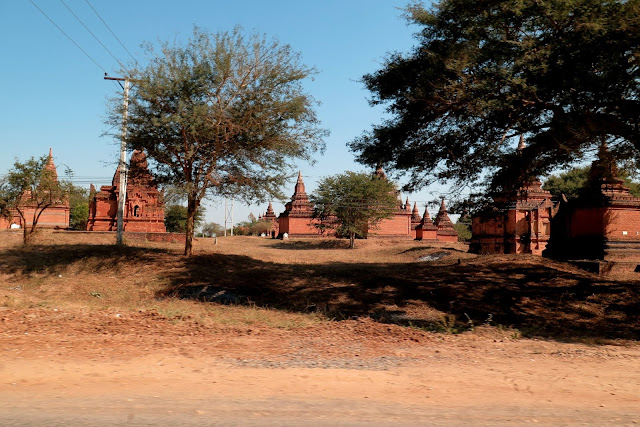





















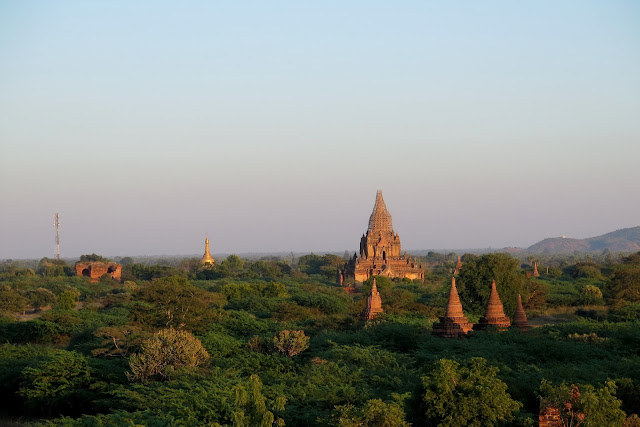





































































































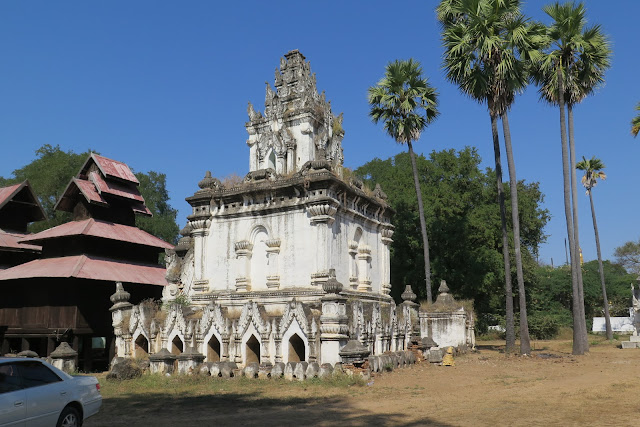





















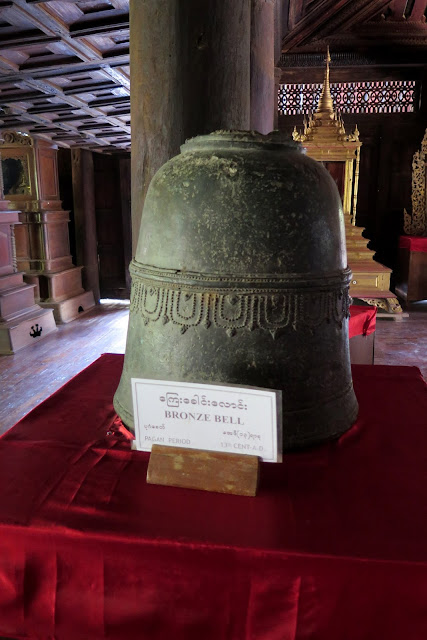




























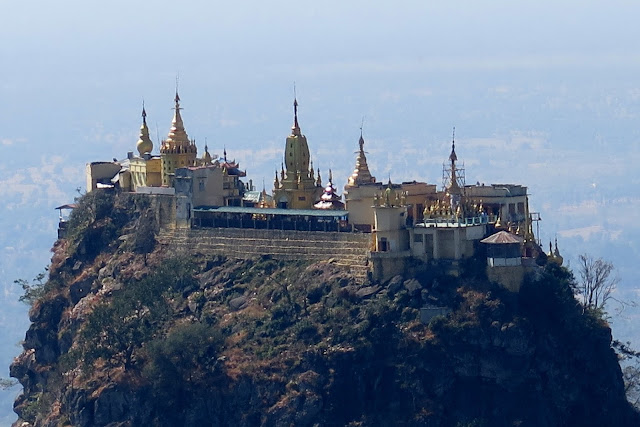





















No comments:
Post a Comment